Walmart Refurbished Computer Tower Continually Downloads Updates but Never Finishes
Choosing a cheap Chromebook vs. a cheap Windows laptop
Our picks are for anyone who doesn't want to or can't spend more than $500 on a laptop. These models are good for anyone who just wants to browse the web, students who don't need special software, and people who work at home only occasionally. If you need a more powerful laptop, take a look at our guide to the best laptops.
At this price, Chromebooks are better than Windows laptops because they're faster at the things most people use a laptop for. They also tend to have better build quality, longer battery life, and superior screens, keyboards, and trackpads. Chromebooks don't need antivirus software and don't come with bloatware (unnecessary, manufacturer-loaded software that clutters the computer and slows it down). If you spend your computing time in a browser—checking email, using Google Docs, watching Netflix, or making Zoom calls—Chrome OS is all you need. But if you need specialized software for work or school, if you want to play Windows-specific games, or if you need to be able to work offline, you're better off with Windows.
A great Windows laptop under $500 can handle web browsing, video calls, and media consumption, but they're rare—many cheap Windows laptops buckle under the load of running more than a couple apps at a time. And buying a bad laptop may cost you more in the long term: Compared with an $800 laptop, it will feel worse in everyday use in two years, and you'll need to replace it sooner. Even $550, if you can swing it, will more reliably buy you a faster computer that will last longer.
If you don't need Windows, if you prefer Apple's platforms, or if you mostly watch videos and play games, consider an iPad with a keyboard. Compared with a cheap Windows laptop, this combo is snappier when you're banging out emails, watching movies, or taking notes, and whereas a Chromebook forces you to rely on web apps and Android apps designed for phones, you can find thousands of iPad-optimized apps and games. But an iPad-and-keyboard combo is not a complete replacement for a laptop.
Best Chromebooks under $500
Our pick
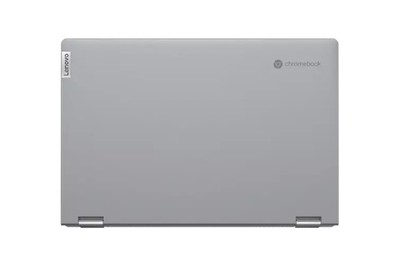
Recommended configuration
| Processor: | Intel Core i3-1115G4 | Screen: | 13.3-inch 1920×1080 touch |
| Memory: | 8 GB | Weight: | 2.97 pounds |
| Storage: | 64 GB or 128 GB SSD | Tested battery life: | 8 hours |
Why we like this one: If you want a cheap laptop that's enjoyable to use, we recommend the Lenovo Flex 5i Chromebook (13″) over any similarly priced Windows laptop. The Flex 5i is an exceptional Chromebook—it offers fast performance, it has an excellent keyboard and trackpad, it is compact and light, and its 1080p touchscreen is vivid and bright. This Chromebook is faster than Windows laptops at the tasks most people use laptops for, including browsing the web (even with a ton of tabs open), making video calls, working in documents and spreadsheets, and watching movies. And the Flex 5i is much more portable than cheap Windows options, and free of the bloatware that slows them down.

Where it falls short: Aside from the limitations of ChromeOS outlined above, the Flex 5i has no major flaws. Its battery will last for a full day of work or classes, but in our tests it fell a couple hours short of our other Chromebook picks. So it may be a tight squeeze at the end of a full day if you don't get a chance to plug in your laptop. We also found that the lid can be tricky; I frequently found myself needing two hands to open the Flex 5i.
Also great
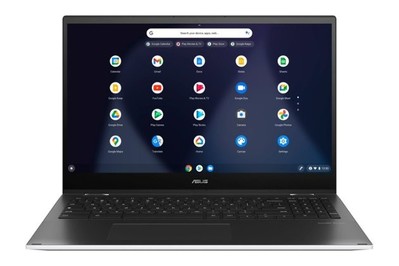
Recommended configuration
| Processor: | Intel Core i3-1115G4 | Screen: | 15.6-inch 1920×1080 touch |
| Memory: | 8 GB | Weight: | 4.3 pounds |
| Storage: | 128 GB SSD | Tested battery life: | 11.5 hours |
Why we like this one: If you want a larger screen and a number pad, we recommend the Asus Chromebook Flip C536 (C536EA-BI3T3). Its vibrant, 15.6-inch touchscreen provides more room to get work done or enjoy media, and the number pad is useful if you input a lot of data. The Flip C536's backlit keys and extra-wide trackpad feel satisfying and responsive. But even though the C536 will last a long time away from an outlet, it's too large and heavy to carry around on a regular basis.

Where it falls short: The 15-inch display makes the Flip C536 heavier and bulkier, so it's much less portable than our other picks—we don't recommend it if you need a laptop to take to work, class, or even a coffee shop. For some reason the C536 has a 360-degree hinge, but it's way too weighty to flip around and use comfortably in other modes.
Best Windows laptops under $500
Our pick
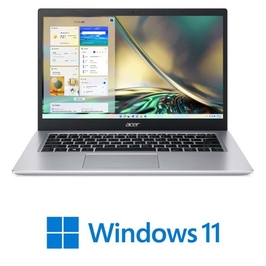
Recommended configuration
| Processor: | Intel Core i3-1115G4 or i5-1135G7 | Screen: | 14-inch 1920×1080 non-touch |
| Memory: | 8 GB | Weight: | 3.2 pounds |
| Storage: | 256 GB SSD | Tested battery life: | 8.5 hours |
Why we like this one: If you need to run Windows apps or games, or if you prefer to work offline, we recommend the Acer Aspire 5 (A514-54) in any of the following configurations: 501Z, 35LK, or 395V. Its processor, memory, and storage are fast enough to meet most people's computing needs for years to come—especially the Core i5 model, though the Core i3 models are also plenty fast if that one's unavailable. Many cheap Windows laptops have less memory or terrible processors that limit them to running only a couple apps and a handful of browser tabs at a time.
The Aspire 5 (A514-54) is one of the more portable, cheap Windows laptops we've tested. It's lighter and more compact than common Windows laptops in this price range, and its battery life lasted 8 hours and 35 minutes in our tests—above average compared to the other models we tested in mid-2022. Unlike cheap laptops with unpleasant keyboards and trackpads that flex and rattle, the Aspire 5's keyboard and trackpad are accurate and reliable. The Aspire 5's 14-inch 1920×1080 screen looks crisp but has a slight yellowish tint. Most Windows laptops in this price range have lower-resolution screens that look pixelated or horrendous TN panels that look harsh and blown out, and they also invert colors at the edge of the display when you look at the screen head-on.

Where it falls short: By default, some configurations of the Aspire 5 (A514-54) ship with Windows 11 S mode, which only allows apps from the Microsoft Store and limits you to Microsoft Edge for web browsing. But you can switch it to Windows 11 Home for free to install any program you need. And like many inexpensive Windows laptops, our pick comes with a ton of unnecessary bloatware that takes up space and slows down performance. Follow these steps to remove those programs and make your laptop feel faster and be more secure. The Aspire 5 (A514-54) also lacks a fingerprint reader, which some of our other picks have.
Also great
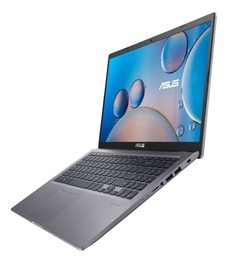
Recommended configuration
| Processor: | Intel Core i3-1115G4 | Screen: | 15-inch 1920×1080 non-touch |
| Memory: | 8 GB | Weight: | 4.0 pounds |
| Storage: | 128 GB SSD | Tested battery life: | 7 hours |
Why we like this one: If you want a Windows laptop with a large 15-inch screen, we recommend the Asus VivoBook 15 F515EA—either the F515EA-AH34 or F515EA-OS33 model. Both versions have our recommended specs and will be fast enough for most people's computer needs for years to come. And the F515EA's 1080p screen, its backlit keyboard, and its trackpad are about as good as those of our other picks. This Vivobook also has a reliable fingerprint reader in the upper right corner of the trackpad, and it has one USB-C port, though it can't be used for charging.

Where it falls short: In our 2022 battery-life tests, the VivoBook 15 F515 lasted for 6 hours 46 minutes—not quite long enough for a full day of work or classes, but about average for this category. And like most inexpensive Windows laptops, this model is bulky and heavy. We recommend following these instructions when you get the laptop to remove unnecessary preinstalled programs. This laptop comes with Windows 11 in S mode, but you can switch it to Windows 11 Home for free if you want to use programs like Zoom.
Also great
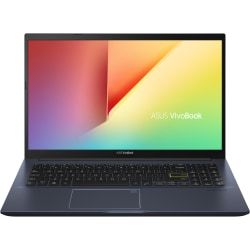
Recommended configuration
| Processor: | Intel Core i3-1115G4 | Screen: | 15-inch 1920×1080 non-touch |
| Memory: | 8 GB | Weight: | 3.97 pounds |
| Storage: | 256 GB SSD | Tested battery life: | 6 hours |
Why we like this one: The Asus VivoBook 15 F513EA-OS36 is another good budget Windows laptop. It's fast enough for everyday work and it's a sturdy, well-built laptop that should last for years. This VivoBook has a decent 1080p display, a comfortable backlit keyboard with a full number pad, and a responsive trackpad with a reliable built-in fingerprint reader. It also has one USB-C port (though it can't charge via this port).

Where it falls short: The Vivobook 15 F513 lasted 5 hours and 47 minutes in our battery-life tests—not quite as long as our other picks and not long enough to last a full day of work or class. And like our other picks, the VivoBook 15 F513 is large and heavy. We also recommend following these instructions to remove unnecessary programs. By default, the VivoBook runs in Windows 10 S mode, but you can switch it to Windows 10 Home for free.
Also great
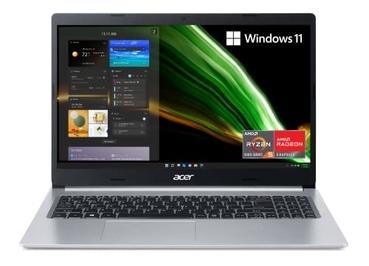
Recommended configuration
| Processor: | AMD Ryzen 3 5300U or Ryzen 5 5500U | Screen: | 15-inch 1920×1080 non-touch |
| Memory: | 8 GB | Weight: | 3.97 pounds |
| Storage: | 256 GB SSD | Tested battery life: | 9.5 hours |
Why we like this one: If the other options are unavailable or cost more than $500, the Acer Aspire 5 A515-45 (in either the R74Z or R6PQ configurations) is another solid 15-inch Windows laptop. It's fast enough to handle most workloads, and its 15-inch 1920×1080 screen looks vivid and bright, which is an achievement compared with many Windows laptops in this price range. It has a decent—but not great, and not backlit—keyboard with a built-in number pad, a responsive trackpad, and one USB-C port. The Aspire 5 also has a few more hours of battery life than our other Windows picks; it lasted 9 hours 27 minutes in our tests.

Where it falls short: The Aspire 5 is big and heavy, so despite its long battery life it's not especially convenient to use on the go. And like most inexpensive Windows laptops, it comes with a ton of unnecessary bloatware that takes up space and slows down performance. We recommend following these steps to remove those unnecessary programs and make your laptop feel faster, and to help it be more secure. It also lacks a fingerprint reader, and its keyboard isn't as satisfying as that of the Asus VivoBook models above.
What about an iPad?
Also great
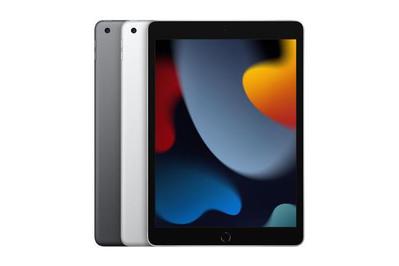
Why we like it: Depending on how you use a computer, you might not need a laptop at all. An Apple iPad (9th generation) with a Bluetooth keyboard or a keyboard case makes for a lighter and more portable system than any of our picks. If you primarily browse the web, make video calls, write, and take notes, an iPad provides a smoother, less painful experience than the Windows options in this price category.

Where it falls short: An iPad can't run traditional desktop apps and offers only limited multitasking support, so it's not a direct replacement for a laptop. If you need to run more than two apps at once, work with specialty software, or want a large screen, an iPad won't work for you.
Other good options
If you can spend just a little more than $500…
The Dell Inspiron 14 (5410) is a surprisingly great laptop. It was going to be our top pick, but unfortunately Dell discontinued the sub-$500 model with an i3 processor. But as of this writing, the version with a Core i5-11300H processor, 8 GB of memory, and a 512 GB solid-state drive is still available for $550, which is unbeatable performance for that price. (We haven't tested the Core i5 model, but aside from the processor, it's identical to the Core i3 model we tested.) The Inspiron 14 (5410) is compact and light, and the Core i3 model we tested had above-average battery life of about 8.5 hours in our tests; we expect the Core i5 model's battery life to be a bit shorter but not by too much. Its 14-inch 1920×1080 display is the best of the models we tested this year, as is its comfortable backlit keyboard and sturdy build quality. As an added bonus, the Inspiron 14 (5410) has a reliable fingerprint reader built into the power button. This laptop is by far the best value I've seen in nearly a decade of testing laptops; if you need a Windows laptop and can spend just a little more than $500, this is the one to get.
If our top pick is unavailable…
Get the HP Laptop 14t-dq200, our former top pick. Its processor, memory, and storage are fast enough for most computer work, and its 1920×1080 screen looks crisp with vivid colors—though you have to select this upgrade during checkout or you'll get stuck with a bad display. The 14t lasted 6 hours and 43 minutes in our mid-2022 battery life test, which is about average for this category. Its chassis feels hollow and flexes under light pressure. Its keyboard and trackpad also feel cheap, and rattle when tapped. But both inputs work accurately, and it's the best option if our top pick is out of stock.
If our 15-inch picks are unavailable…
The next best option is the Acer Aspire 3 A315-58-35VZ and A315-58-300D. Compared to the Acer Aspire 5 (A515-45) models we recommend, the Aspire 3 (A315-58) has a worse display, no USB-C ports, and significantly less battery life. We also found that the 300D model ships with a smaller battery and lasted only 5 hours in our mid-2022 battery life test; the 35VZ model lasted 6 hours and 11 minutes. But if our 15-inch picks are out of stock, this is a passable option that performs well enough to do most computer tasks.
If you can spend around $750…
Our budget ultrabook pick, the Asus Zenbook 14 OLED, costs a few hundred dollars more but has the build quality to last at least five years as well as the battery life to run all day. We've also seen it on sale a couple times for $550, and at that price it's an unbeatable value.
If you want a tablet with a bigger screen…
The iPad is plenty powerful for most people, but if you want a bigger screen on your tablet for multitasking and a faster processor, consider the iPad Air. But it starts at $600, and you have to spend more on a keyboard and a case to go with it.
How to shop for a cheap laptop
For laptops under $500, inconsistent pricing, disappearing inventory, and retailer-exclusive deals make shopping difficult. But even if you aren't familiar with computer specifications, you can still find a decent Windows laptop by looking for these features:
- Processor: We recommend an 11th- or 12th-generation Intel Core i5 or i3 processor (such processors have model numbers that start with i5 or i3 and end with 11xxx or 12xxx) or a 5000-series or 6000-series AMD Ryzen 3 or 5 processor (those start with the Ryzen 3 or Ryzen 5 name and end with 5xxx or higher). Avoid AMD processors such as the dual-core A9, as well as Intel Pentium or Celeron processors.
- Storage: Choose a 128 GB or larger solid-state drive (SSD) and avoid hard drives (abbreviated as "HDD" on some product pages).
- Memory: Get 8 GB of memory (which can also be listed as "RAM"). In a pinch, 4 GB will do, but with that smaller amount you won't be able to run many programs at the same time.
- Screen: Look for a display with 1080p resolution, listed as 1920×1080 or "FHD" by many sellers. A computer that hits the other requirements but has a standard HD display (1366×768) will do for basic tasks.
(Chromebooks have different requirements to run well—they run better than Windows laptops with 4 GB of memory and can get away with certain slower processors. You can learn more in our guide to Chromebooks.)
When shopping for a cheap laptop, stick to major retailers with good return policies, such as Amazon, Best Buy, Walmart, or the manufacturer itself. Avoid sites with deals too good to be true, like BuyDig. Buying a refurbished model is another excellent way to save money. When you're shopping for a refurbished laptop, buy from the original manufacturer or an authorized dealer and avoid seller-refurbished models from places like Amazon.
As soon as your laptop arrives, open the box carefully, keep all the parts and accessories, and give the computer a thorough test drive. Check for a clunky trackpad, mushy and unresponsive keys, or a dim, washed-out screen, and if you spot anything you don't like, return the laptop as soon as possible. Wait too long, and you'll be stuck with it—some manufacturers give you only a two-week return window.
If you don't need a laptop right this second, you can find a great deal on a good laptop with some patience—prices fluctuate, and a $700 laptop can temporarily dive below $500. Wirecutter Deals editor Nathan Burrow told us that the best deals on laptops come around the holiday season, starting in November and running through Christmas.
How we picked
You can't get a perfect laptop for less than $500—if it were perfect, it wouldn't be cheap. At this price you make serious trade-offs, so it's worth knowing how the system's components affect your experience:
- Storage: Some cheap Windows laptops still have spinning hard drives or hybrid drives that feel unbearably slow—booting the laptop, launching apps, and browsing files each take so long that you have time to sip coffee and stretch before you can do anything. In our testing, we found that having flash storage (ideally an SSD, but an eMMC drive is also fast enough) instead of a traditional hard drive dramatically improved everyday performance, even more than a faster processor or more memory. But avoid Windows laptops with less than 64 GB of flash storage—you can't even run Windows updates on them without an external drive. You could buy a laptop with a hard drive and replace the drive with an SSD later to save some money, but that's more upgrading than most people feel comfortable doing, so we concentrated on models that came with flash storage.
- Processor: We recommend an 11th- or 12th-generation Intel Core i3 or Core i5 processor or a 5000- or 6000-series AMD Ryzen 3 or Ryzen 5 processor. The Core i3 and Ryzen 3 processors are fine for casual use and basic schoolwork but aren't the best for multitasking; the Core i5 and Ryzen 5 are faster and better at multitasking but rare in this price range. Avoid AMD processors like the dual-core A9 and steer clear of Intel Pentium and Celeron processors like the N4200 and N5000. In our tests we found these processors to be unusable with more than a single open app.
- Memory: For less than $500, it's rare (but possible) to find more than 4 GB of memory without sacrificing flash storage, a decent processor, or a 1080p screen. In our testing, we found that memory was the best spec to compromise on if you absolutely must—a Windows laptop that had 4 GB of memory and an SSD felt better to use than a laptop that had more RAM but also came with a hard drive or a slow processor. Laptop Mag found that 4 GB of memory can run about 10 open browser tabs (assuming you don't have any other apps open) and is good for basic document work with small files. Our tests found similar results, but once you open another app, the usable number of tabs plummets and decreases with each additional app. If you typically run many apps at once, you'll need more memory, and 8 GB is a much better choice for a computer you'll be using years from now.
- Screen: Cheap laptops usually come with cheap 1366×768 screens. We preferred models with a 1080p display (a resolution of 1920×1080), which offers a clear image and more screen real estate. We recommend in-plane switching (IPS) screens because they have more accurate color and better viewing angles than TN (twisted nematic) panels. If you watch a lot of videos on your laptop, you'll notice the benefits.
- Keyboard and trackpad: The keyboard and trackpad should be tolerable and responsive, and neither input device should annoy you so much that you seek out an external keyboard and mouse. Backlit keyboards are a bonus but rare in this price range.
- Build quality: No budget laptop is a paragon of industrial design, but a computer shouldn't feel like it's going to break. Many laptops in this price range are massive 15-inch beasts with cheap plastic cases, loose keys, and rattly trackpads. A decent laptop should be sturdy, shouldn't flex beneath your fingers when you type, and shouldn't creak every time you click the trackpad or tap the spacebar.
- Bloatware: Cheap Windows laptops come with a ton of bloatware, and it's especially problematic on these laptops with slower processors, less memory, and limited storage. We recommend getting rid of useless applications by following these steps as soon as you unpack the laptop to speed up boot time, sew up potential security holes, and eliminate annoying notifications. We experienced mild performance bumps after removing bloatware.
For $500, you don't get much control over features we consider when evaluating more expensive laptops, such as size, battery life, or ports, so although such details are nice to know, they didn't make or break any of our picks. In this category, we just wanted to find usable laptops.
How we tested
To figure out which components had the greatest impact on general use, we first tested three Windows laptops:
- one with an Intel Celeron processor, eMMC storage, and 4 GB of memory
- one with a Core i3 processor, a hard drive, and 8 GB of memory
- one with a Core i3 processor, SSD, and 4 GB of memory
We used each of these configurations for a full day of work, with four to five applications open at once alongside a browser with 10 to 15 tabs. We benchmarked each laptop with PCMark 8's Work and Home tests. In these tests, we found that flash storage was the most important component, followed by a decent processor, with 4 GB of memory being the best compromise to make if you need to. More memory still feels much better to use and will run Windows well for years to come.
Then we tested the Windows laptops and Chromebooks that met our criteria by using each for at least a day of ordinary work and video calls to get a feel for their performance, screens, keyboards, and trackpads. For Chromebooks, we had at least 20 browser tabs open, including Google Docs, Google Sheets, streaming music, Slack, and a variety of other sites. For Windows, we had five to 10 tabs open at a time, as well as the Spotify and Slack applications. We also tested the laptops by opening large Excel spreadsheets, 100-page Word documents, and 200-page PDF files.
The competition
Most Windows laptops under $500 are horrendous, and very few with our recommended specs even exist—we combed through hundreds of models on manufacturer and retailer websites and found only a handful of promising options. We focused on laptops with a minimum of Intel Core i3 or Ryzen 3 processors, 4 GB of RAM, and flash storage. (Although previous-generation processors will likely feel just as fast—and we recommend them if you find a good laptop that uses one—stock of such laptops is even iffier than for current-generation models.)
If you're curious about the Chromebook competition, head over to our Chromebook guide.
The Acer Aspire 5 A515-56-34A3 is fast enough, but it has an awful TN screen that looks harsh and has poor viewing angles. Its keyboard also feels stiff and cheap. It's a cheap computer that works well enough if our picks are out of stock, but you'll have to live with that terrible screen for the laptop's whole lifespan.
The Asus VivoBook 15 F512JA-AS34 was one of our previous picks, but it too has a dreadful display. We only recommend it if you can't find any of our current picks in stock.
Similar to the Gateway, the HP Laptop 15z-ef2000 is fast enough but also has a bad screen and poor build quality. Its keyboard and trackpad also feel unpleasant and make a rattling noise when used.
The Gateway 14.1" Ultra Slim Notebook (GWTN141) has only 4GB of memory, which means it struggles with more than a couple of apps open and it won't perform as well for as many years as our picks. It also has poor build quality and terrible speakers.
The Lenovo IdeaPad Flex 3 (11″) uses an Intel Pentium N5030 processor, which is barely fast enough on a Chromebook and too slow on Windows. We tested a Zoom call alongside a couple of open browser tabs, and we encountered connection dropouts and audio delays of more than 30 seconds, which made conversation impossible.
Sources
-
Brian Westover, How much RAM do I need?, Laptop Mag , June 22, 2018
-
Avram Piltch, Help Me, LAPTOP! Will an SSD Improve My Budget Laptop?, Laptop Mag , May 21, 2017
-
Cale Hunt, eMMC vs. SSD storage: What's the difference?, Windows Central , February 26, 2019
Source: https://www.nytimes.com/wirecutter/reviews/best-laptop-under-500/
0 Response to "Walmart Refurbished Computer Tower Continually Downloads Updates but Never Finishes"
Post a Comment